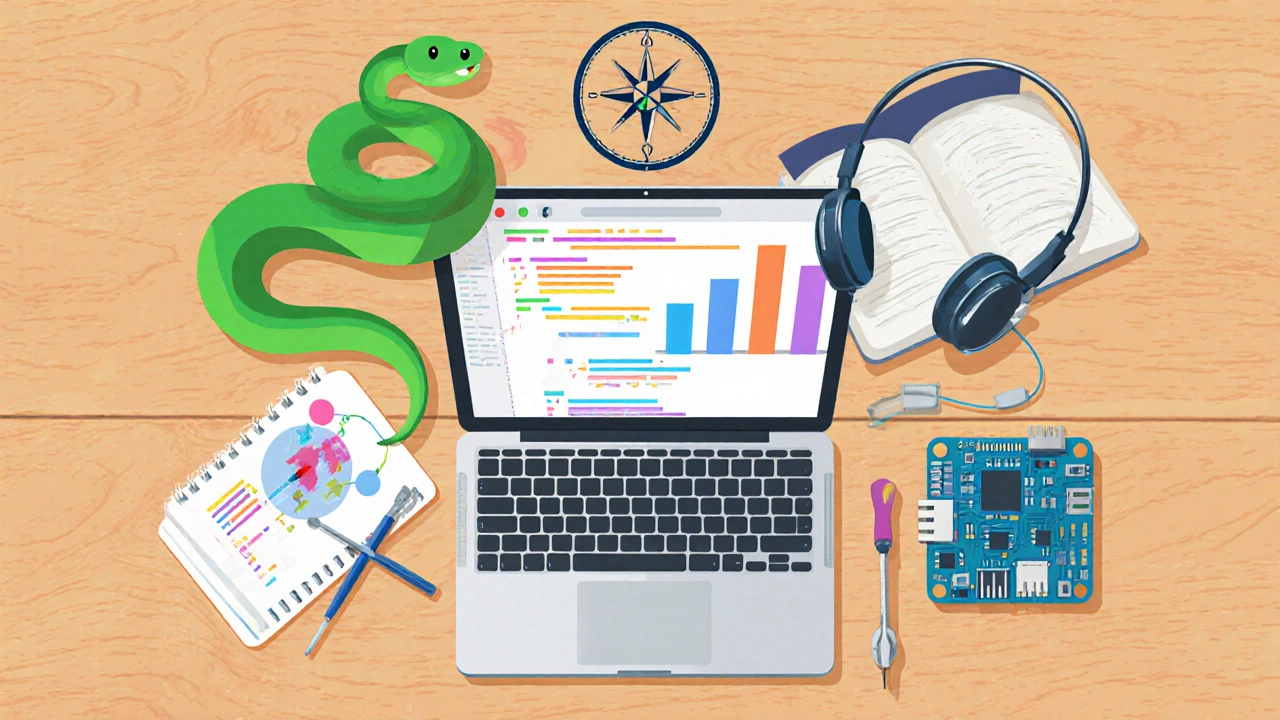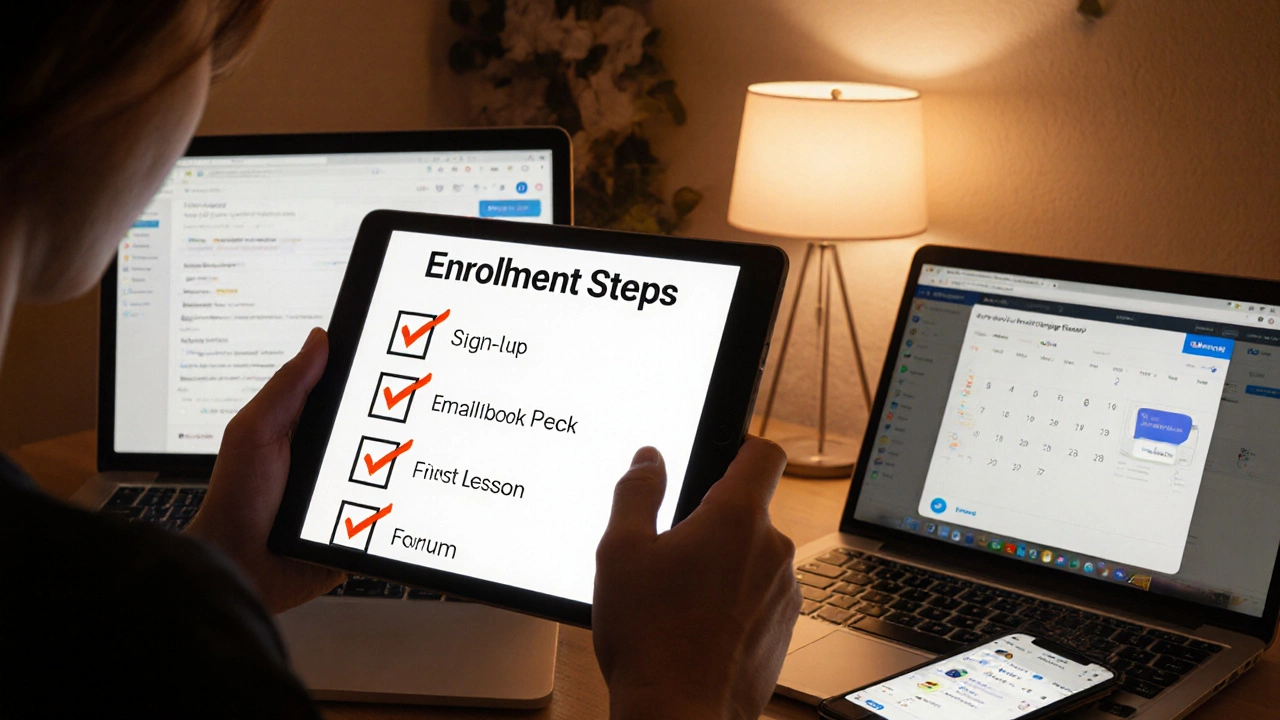Quick Takeaways
- Identify your goal - coding, office work, support or data - before picking a course.
- For pure coding beginners, Python programming on Coursera or Udemy tops the list.
- If you want a broad IT foundation, the Google IT Support Professional Certificate offers a structured path.
- Free courses give solid basics, but paid tracks usually include labs and a recognized credential.
- Follow a simple enrollment checklist to start learning within a day.
When you search for a best computer course for beginners is a learning program that introduces newcomers to core computing concepts and practical skills, you’re looking for something that won’t overwhelm you, gives clear milestones, and matches the job you eventually want. Below you’ll find a step‑by‑step guide that walks you through picking the right option, compares the top five courses available in 2025, and shows how to get started without getting lost in jargon.
How to Pick the Right Beginner Computer Course
First, answer three quick questions:
- What do you want to do after the course? Build websites, write scripts, analyse data, or support users?
- How much time can you commit each week?
- Do you need a formal certificate for a resume?
These answers map directly to the key selection criteria:
- Subject relevance - match the core skill set (e.g., Python programming for coding, Microsoft Office Essentials for office admin).
- Learning format - self‑paced videos, live instructor sessions, or blended labs.
- Cost vs credential - free courses give basics, paid tracks often include a credential like the CompTIA A+ certification prep badge.
- Support resources - forums, mentorship, or project reviews.
Once you rank these factors, you can narrow the field to a handful of courses that actually fit your life.
Top 5 Courses for Beginners in 2025
Here are the five programs that consistently score high on relevance, learner feedback, and job‑ready outcomes.
| Course | Provider | Format | Cost | Duration | Best For |
|---|---|---|---|---|---|
| Python for Everybody | Coursera | Self‑paced video + quizzes | Free audit / $49 for certificate | 8 weeks (3‑4 hrs/week) | Absolute coding newbies |
| Web Development Basics | Udemy | Video + hands‑on projects | $19.99 (often on sale) | 12 weeks (2‑3 hrs/week) | Those who want to build simple sites |
| Google IT Support Professional Certificate | Coursera | Instructor‑led + labs | $39/month (≈ $156 total) | 6 months (5‑10 hrs/week) | Support‑role seekers |
| Data Analysis Fundamentals | edX | Self‑paced + peer review | Free audit / $99 for verified cert | 10 weeks (3 hrs/week) | Future analysts or Excel power users |
| CompTIA A+ Certification Prep | Pluralsight | Video + practice exams | $29/month (≈ $174 annual) | Variable (self‑paced) | Hardware support & IT entry jobs |
Each of these courses hits a different career lane. If you’re unsure, start with best computer course for beginners - the free audit of Python for Everybody - and see how comfortable you feel writing simple scripts.

Free vs. Paid - What You Actually Get
Free tracks usually include video lessons, reading material, and basic quizzes. That’s perfect for curiosity or a trial run, but they often lack:
- Hands‑on labs that simulate real‑world environments.
- Official credentials that employers recognize.
- Personal mentor feedback on assignments.
Paid courses bundle these extras. For instance, the Google IT Support Certificate includes a virtual lab platform where you troubleshoot simulated network issues - a skill you can showcase on a resume. The extra $40‑$100 per month pays off when it shortens your job search.
Match the Course to Your Career Goal
Below is a quick mapping:
- Coding or software development - start with Python programming or the Udemy Web Development Basics.
- Office administration - the Microsoft Office Essentials course on LinkedIn Learning gives you Excel, Word, and PowerPoint mastery.
- Help‑desk or support roles - the Google IT Support Professional Certificate or CompTIA A+ prep are industry‑validated pathways.
- Data‑driven roles - Data Analysis Fundamentals on edX teaches Excel, SQL basics, and data visualization.
Pick the lane that excites you, then lock in the matching course.

Enrollment Checklist - Get Started in 24 Hours
- Create an account on the chosen platform (Coursera, Udemy, edX, or Pluralsight).
- Verify your email and set up two‑factor authentication for security.
- Enroll in the free audit or purchase the course - most platforms let you start immediately.
- Download the app (optional) to study on the go.
- Mark the first three lessons in your calendar; treat them like a work meeting.
- Join the course’s discussion forum - ask a question within the first day to break the ice.
Following these steps guarantees you won’t stall at the “sign‑up” stage, which is the biggest dropout point for beginners.
Frequently Asked Questions
Do I need any prior tech experience?
No. All five courses listed start from zero knowledge and introduce concepts in plain language. The only requirement is basic computer literacy, like using a web browser.
Can I get a job with a free certificate?
A free certificate shows commitment, but many employers prefer a paid credential that’s industry‑recognized, such as the Google IT Support Certificate or CompTIA A+ badge.
How long should I study each week?
Aim for 3‑5 hours per week. This balances retention with a busy schedule and aligns with the pacing recommended by most platforms.
Are there any hidden costs?
Sometimes you’ll pay for a pro‑level subscription to access graded assignments or labs. Read the pricing details before you click “Enroll”.
What if I fall behind the schedule?
Self‑paced courses let you pause and resume without penalty. For instructor‑led tracks, most platforms allow a grace period of a week or two.
